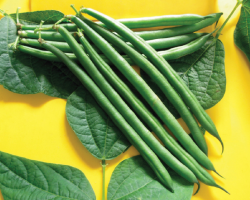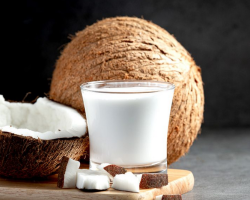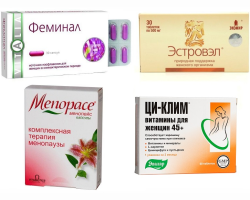In this article, we will talk in detail about the differences between red onions and other varieties. You will learn about the properties, composition, use of this vegetable. And finally, we will figure out what is the difference between red onions and other species.
Read on our website another article on the topic: "Do you put in salad in a salad on onions?". You will find out what is needed - salad or another.
Red onions or in another way - purple, you can grow even in your garden. Its homeland is Central Asia, is considered a variety of ordinary yellow onions. But why do we call it red? It’s easy to guess. After all, a distinctive feature of onions is the red or purple color of the husk, and purple veins are visible between white scales. The pulp of red onions is juicy and fragrant. So, we continue to study the differences. Read further.
Content
- Features of the use of red onions: in cooking and traditional medicine
- What is the difference between red onions and an ordinary onion yellow: in properties, composition, taste and aroma
- What is the difference between red onion and white?
- What is the difference between red onions and blue?
- What is the difference between red onions from Yalta, Crimean?
- Video: Red onions - what effect on our body has
- Video: White onions Useful properties
- Video: this is what purple onions will do with you if you have it every day
Features of the use of red onions: in cooking and traditional medicine

Red onions, like any other vegetable, found the use in the two most common areas: in cooking and traditional medicine. Below are the features of use:
- Red onions, of course, are in the diet of almost every person.
- A lot of simple and unusual dishes are prepared with it.
- In cooking it is used by all the kitchens of the people.
- No one will give up a sharp, piquant and sweet onion?
- It is also included in the menu due to the properties of the vegetable to accumulate many useful vitamins that prevent infectious diseases, develop immunity.
Red onion is a low -calorie food product.
- It contains about 80% of water, a large amount of fiber and little fat.
- Of course, in order for the bow to retain its beneficial properties, you need to know how to cook it in dishes.
Red onions are an excellent ingredient for marinade, pizza, broths and sauces.
- There are a lot of sugars in this vegetable, so if you bite a piece of such a bow, you can immediately feel sweet notes and the presence of bitterness.
- It is not suitable for adding to meat products (with the exception of barbecue), but it goes well with other fresh vegetable fruits in the salad and fruits in snacks (for example, apple acute snack).
By the way, it is with the help of the peel of red onion that the eggs are painted on Easter. So with confidence it is possible to say that red onions are beautiful Natural dye.
Such a fruit, as was said, is an early, good deliverer from colds and viral disease. Since the time of ancient Russia, many different proverbs and sayings have been preserved with the participation of this wonderful vegetable (and most of all they are suitable for red onion):

From ancient times, this vegetable has been used by different nations. For example, when the famous Egyptian pyramids were erected, the slaves were fed with onions, believing that such a healthy diet would remain endurance, increase work capacity and increase strength. And Roman wrestlers, gladiators also leaned on the beneficial properties of onions, because they considered this vegetable a symbol of courage and fearlessness. They coated their body with onion oil, because this procedure, in their opinion, strengthened the muscles, made them elastic and strong.
And in the modern world there are many reasons why it is worth adding onions to your diet. This vegetable has a high concentration of essential oils, which make us cry when cutting it. A potent agent is various tinctures from the red fruit, protecting from diseases. For example:
- Tincture on wine Not only is very tasty, but will also be a good diuretic.
- Cleaned fruit boiled in table vinegar, Use as a compress to remove corns and corns on the heels.
- Porridge and husk from this vegetable are used for bruises, headaches, joint stretching, wounds.
- In Ancient Russia, it was noticed that onions are a good medicine for toothache. You just need to grate the sick tooth or gum with the juice of the vegetable.
- Fans of drinking strong drinks, red onion also helps: It is enough to eat the bulb after the drunk glass. The vegetable will weaken the effect of alcohol.
Red onions are also an excellent cosmetic product. The infusion of it is rubbed into the head, thus getting rid of the dandruff and oily of the skin on the head, from hair loss, and also smear their face to remove wrinkles or freckles. How many folk methods exists, everything cannot be counted.
What is the difference between red onions and an ordinary onion yellow: in properties, composition, taste and aroma

Now we will figure out the properties of red onions, or rather, how it differs from the usual on -hand yellow. It should be noted that the yellow vegetable is found in every housewife in the kitchen, which cannot be said about red. To make it more understandable to compare and compare two varieties of onions, we provided the table:
| Comparison criteria | Red onion | Yellow onions |
| Properties | It has a smaller antiviral effect. But it goes well in dishes, having a sweetish taste. | The people are customary to talk about the healing properties of this vegetable, therefore it has antibacterial and antiviral effects, due to its composition, in which there are many vitamins. |
| Color | Shell of red or purple. Inside, the onions are reddish with white veins. The bulb film has a purple hue. | The peel has a brownish, golden hue. Inside, the fetus is covered with yellowish skin and transparent film. The onion itself is white. |
| Compound | The abundance of various antioxidants in the composition, one of which - querecetin - gives the pulp part such a bright shade. The composition contains a lot of vitamin C, necessary for immunity. | In this fruit there are many sulfur discharge that cause lacrimation. Therefore, it is best to cut such a bow with cubes. It is used to add to different meat soups, second dishes, salads and snacks. |
| Taste | Less acute than the usual onion, a lot of sweet varieties. A pleasant taste with light sweetness. |
Acute to taste with bitterness. Some species are very vicious.
|
| Aroma | It has a fresh aroma, slightly sweetish. Because of the properties, it is best used for salads and for decorating dishes. | Even the aroma in it is burning with acuteness. The onion is very vigorous, especially if you cut it, it releases juices that make your eyes watery. |
What is the difference between red onion and white?

White onions are most popular in our lane. Unlike red, it has a more delicate taste. More often put in salads, but you can pickle or extinguish. A bow with a white peel can be eaten just like that, because it is not acute at all, which means that it cannot cause an exacerbation of stomach diseases and irritation of the mucosa. Such a vegetable contains a lot of trace elements important for the body: natural vitamins and essential oils. Red onions are also rich in essential oils and after eating it does not cause a strong smell. What else is the difference between red onion from white?
- The vegetable of ball-shaped, less often you can find oblong heads.
- Unlike a simple onion, a fast, in which the color of the peel is golden, in white it has a white shade, and can also be gray or beige.
- As mentioned above, the taste is delicate, not bitter and not spicy, so this species is great for adding to salads.
- Red onions have a sweet taste without bitterness.
These are excellent views suitable for vegetable salads that are served in natural raw form. It turns out tasty and piquant.
What is the difference between red onions and blue?

Of course, in nature there is no completely blue onion, but there are dark purple heads with blue veins. Their husk is almost black. Red onions are similar to blue due to the high sugar content, which makes the vegetable sweeter. Blue onions are also a very good dye, which is added to the decoration plates. But the main difference between the blue variety of onions and others in the chemical composition:
- There is a lot of fluorine in Blue Luke, useful for enamel of teeth.
- Sulfur in the blue fruit is not enough, so there are fewer annoying properties.
- A weak diuretic effect, because onions are dark.
- High content of quercetine, substances that prevent the occurrence of cancer tumors and contributing to the improvement of immunity.
In general, blue onions are the same red onion, or another, Crimean. Read further.
What is the difference between red onions from Yalta, Crimean?
Red onions grow in the southern lane, in warm edges. If you were in the Crimea, then you certainly saw how people sell red onions hung on the shelves on the tracks. In general opinion, the totality of various factors - the clean air of the Crimean mountains, a warm climate, light of the sun, soil composition, affects the cultivation of the vegetable, making the root crop is juicy and tastier. But there are still some differences between Crimean and red onions.
| Comparison criteria | Crimean, Yalta bow | Red onion |
| The shape of the bulb | Flat, large, rounded | Large, flat |
| Layers | 5-7 mm of each layer inside (thick) | 2-5 mm of each layer inside (thin) |
| The color of the layers | Pale pink with purple edges | White with red veins |
| Peel | Fat and dense | Thin |
| Taste | Sweet, juicy | Sweet, with bitterness |
| What time matures | July | All summer months |
So, in this article, we dismantled the main distinctive features of the red onion from other varieties. As a result, this is a very useful vegetable that must be added to their diet to everyone who has no gastrointestinal diseases. It is a sharp vegetable, so it cannot be given to the kids, and adults need to eat it carefully and in minimal quantities.
Video: Red onions - what effect on our body has
Video: White onions Useful properties
Video: this is what purple onions will do with you if you have it every day
Read on the topic:







